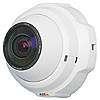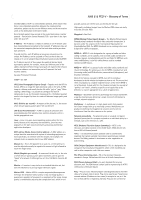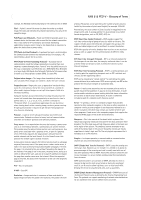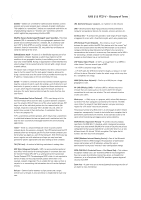Axis Communications 212 PTZ 212 PTZ/-V - User's Manual - Page 50
Optimizing your system, Bandwidth, Video & Image >, Text Overlay Settings
 |
View all Axis Communications 212 PTZ manuals
Add to My Manuals
Save this manual to your list of manuals |
Page 50 highlights
AXIS 212 PTZ/-V - Technical Specifications General performance considerations When setting up your system, it is important to consider how various settings and situations will affect performance. Some factors affect the amount of bandwidth (the bit rate) required, others can affect the frame rate, and some will affect both. If the load on the CPU reaches its maximum, this will also affect the frame rate. The following factors are among the most important to consider: • High image resolutions and/or lower compression levels result in larger images. Bandwidth affected. • Access by large numbers of Motion JPEG and/or unicast MPEG-4 clients. Bandwidth affected. • Simultaneous viewing of different streams (resolution, compression) by different clients. Frame rate and bandwidth affected. • Accessing both Motion JPEG and MPEG-4 video streams simultaneously. Frame rate and bandwidth affected. • Heavy usage of event settings affects the camera's CPU load. Frame rate affected. • Enabled motion detection. Frame rate and bandwidth affected. • Heavy network utilization due to poor infrastructure. Bandwidth affected • Viewing on poorly performing client PC's lowers perceived performance. Frame rate affected. Optimizing your system To see the bandwidth and frame rate currently required by the video stream, AXIS 212 PTZ/-V provides a tool that can be used to display these values directly in the video image. To do this, special format strings are added as part of a text overlay. Simply add #r (average frame rate in fps) and/or #b (average bandwidth in kbps) to the overlay. For detailed instructions, please see the online help for Video & Image > Text Overlay Settings, and the help for File Naming & Date/Time Formats. Important! The figures displayed here are the values as delivered by the camera. If other restrictions are currently in force, (for example, bandwidth limitation) these values might not correspond to those actually received by the client. For Motion JPEG, these values will be accurate as long as no frame rate limit has been specified. Bandwidth As there are many factors that affect bandwidth, it is very difficult to predict the required amounts. The settings that affect bandwidth are: • image resolution • image compression • frame rate • MPEG-4 GOV settings • bit rate control settings • audio settings There are also factors in the monitored scene that will affect the bandwidth. These are: • amount of motion • image complexity • lighting conditions For MPEG-4, if there is only limited bandwidth available, and if this is more important than the image quality, using a constant bit rate (CBR) is recommended. Use a variable bit rate (VBR) if the image quality needs to be maintained at a higher level. If supported on the network, consider also using MPEG-4 multicasting, as the bandwidth consumption will be much lower. 50















